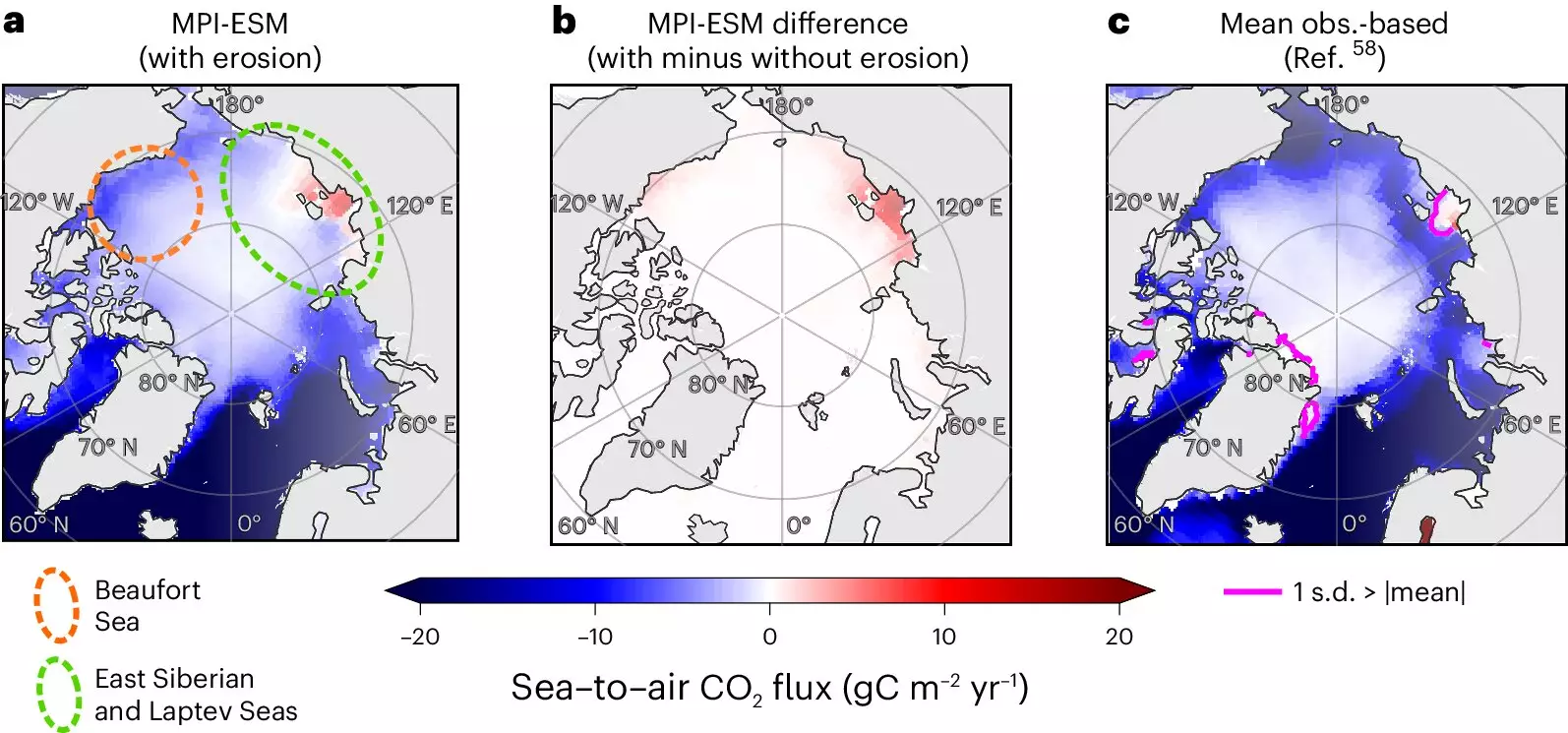The consequences of climate change are increasingly evident, especially in fragile regions like the Arctic. Recent research reveals alarming trends regarding the Arctic Ocean’s diminishing ability to absorb carbon dioxide (CO2), providing a stark reminder of the intricate connections between climate systems and human activity. According to a study published in *Nature Climate Change*, the reduction of permafrost and the resulting coastal erosion are fundamentally reshaping the Arctic’s role in global carbon dynamics. By 2100, these changes could lead to an annual release of carbon that rivals approximately 10% of all car emissions from Europe in 2021, raising urgent concerns over climate change mitigation strategies.
As permafrost—a type of soil that remains frozen year-round—begins to thaw, not only does it release trapped carbon, but it simultaneously reduces the Arctic Ocean’s capacity to sequester CO2. The research indicates that accelerated coastal erosion, driven by melting ice and rising sea levels, is aggravating this phenomenon. Lead author David Nielsen emphasizes the unprecedented nature of these findings, pointing out that, contrary to previous assumptions, the Arctic Ocean’s capability to absorb CO2 is fundamentally declining. This decline will potentially hinder global efforts to combat atmospheric carbon accumulation and the subsequent climate crises.
The consequences of this erosion extend beyond mere statistics; they threaten both the ecological and cultural fabric of Arctic communities. Coastal regions vulnerable to erosion face increased risks of storm damage and rising sea levels, necessitating relocations and endangering archaeological relics. As areas like Shishmaref in Alaska grapple with these existential threats, the interplay between environment and human activity becomes painfully clear.
Historically, Arctic permafrost has played a significant role in stabilizing Earth’s carbon cycles, acting as a natural reservoir that retains substantial amounts of carbon. Estimates suggest there is up to 2.5 times more carbon stored in permafrost than in the entire atmosphere. However, with warming accelerating faster in the Arctic than for the rest of the planet—up to three to four times the global average—the stability of these carbon sinks is becoming increasingly precarious.
Nielsen’s study presents a stark outlook: The Arctic’s changing landscape is not just a local issue but a global phenomenon that could contribute to serious ecological imbalances. Current models predict a potential release of over 14 million tons of CO2 per year by the century’s close, significantly diminishing the ocean’s formerly vital carbon-absorbing capabilities.
Despite their clarity, the findings of the study do come with caveats. While they shed light on the dire impacts of coastal permafrost erosion, they also underline the need for ongoing research and refined climate models. Kay McMonigal, a researcher not involved with the study, notes the pioneering nature of this research. It highlights areas that necessitate deeper inquiry, especially in terms of feedback loops where rising global temperatures could further accelerate permafrost melting—thus creating a vicious cycle that compounds the already critical climate situation.
Moreover, while the contributions of these processes are indeed alarming, they remain modest in proportion to global human emissions, representing a mere 0.1% worldwide. Nevertheless, this data elucidates the interconnectedness of climate feedback mechanisms, revealing that anthropogenic emissions contribute not only directly to warming but also indirectly by destabilizing crucial carbon sinks.
In light of these findings, it becomes evident that tackling climate change necessitates a multi-faceted approach. The urgency to mitigate fossil fuel usage cannot be overstated; the continued rise in global temperatures directly correlates with the disturbing trends observed in Arctic permafrost. As coastal erosion threatens to deteriorate the ocean’s ability to act as a carbon sink, the imperative for comprehensive climate policies grows stronger.
The research serves as a clarion call for global cooperation and inventive solutions tailored to protecting the Arctic environment while mitigating greenhouse gas emissions worldwide. Policymakers must prioritize strategies that account for the vulnerabilities of permafrost and other critical ecosystems to ensure a more sustainable and resilient planet for future generations.
Recognizing and addressing the Arctic’s changing role in carbon dynamics could be vital as humanity strives to reverse the harmful effects of climate change. The survival of both natural ecosystems and human communities depends on our collective ability to adapt and respond to the implications of these ongoing shifts.


Leave a Reply